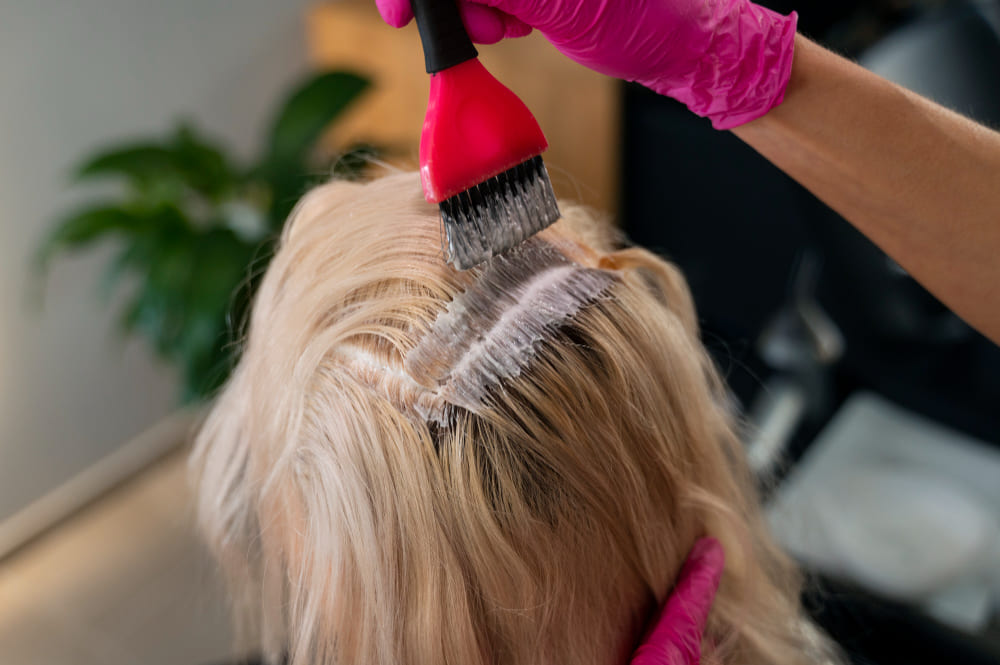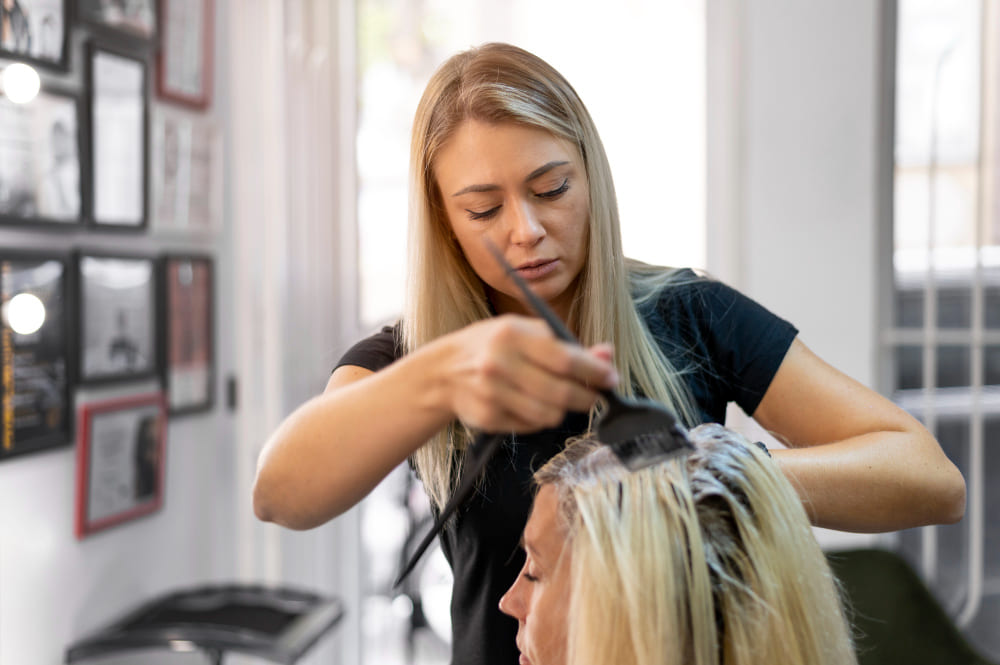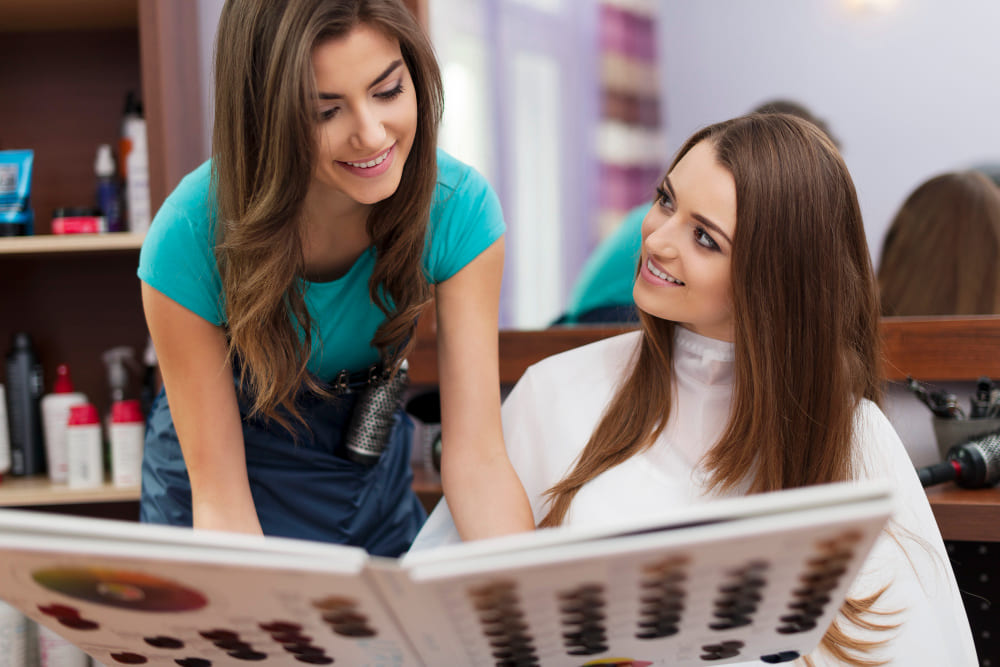Whether you have recently dyed your hair or want to refresh your natural color, toning hair can make all the difference. Far more than just an optional step, hair toning is a powerful technique that can completely transform your style — giving it depth, shine, and that professional finish often seen in salons. But what is toning hair, and how exactly does it enhance your appearance?
Let’s break the cutest part about toner hair treatments and how they can give your hair a new lease of life.
What Is Hair Toning?
So, what is toning hair? Hair toning is a procedure of changing the undertone of your hair. It is particularly necessary after hair bleaching or coloring, where the undesired yellow, brassy, or orange tones tend to surface. A hair toner neutralizes these tones, making your hair look cooler, warmer, or natural — depending on what’s intended.
If you have wondered “what is toning hair?”, think of it as the polish that completes your final color. It will not change the underlying color but will clarify the overall hair tone, whether you are looking for icy blondes, rich brunettes, or cool silvers.
Why You Should Tone Hair
There are several reasons why tone hair treatments have become a must in modern hairstyling:
Refines Color
After hair colouring, toners help to remove harsh undertones and give your hair a refined, even color. They work especially well on blonde, highlighted, or bleached hair that tends to develop yellow or orange tones. Toners remove these unwanted tones by depositing complementary pigments. The effect is a more professional-looking and polished finish that contributes to your overall style.
Enhances Shine
Most toner products also function as glosses, adding luminous shine and smoothing the surface of the hair. The treatments bounce light more efficiently, making dull hair look healthier and more vibrant. A shiny finish can also make your hair color deeper, so the actual color appears richer. Whether you are aiming for cool ash or warm caramel, shine is what makes it pop.
Customizes Your Shade
You can try out different hair tones without making a commitment to a full color job. Toners allow you to shift your hair to either cooler or warmer tones with ease. For example, you can switch from golden blonde to icy platinum using the right toner hair treatment. This makes hair toning a low-commitment and creative manner of testing your look.
Extends Color Life
Color hair toning can extend the time between salon appointments by reviving faded color. Color-treated hair naturally loses its intensity over time, especially after exposure to sun, heat, or water. Restore the depth and richness of your hair color with a toner, so that it looks like it was just done. It is an inexpensive and effective method of extending the life of your color and having it look salon-fresh.

How Hair Toning Works
Of all voluntary hair care, toning is perhaps the most strategic. A color toner for hair is typically a semi-permanent formula applied after bleaching to neutralize or enhance color. For instance, purple tone neutralizes yellow in blonde color hair, while blue toners neutralize orange in brunette colors.
Hair color is all about balance, and well-done toner hair application creates your look elegant and natural, not artificial or uneven. Whether you’re coloring dark ash brown or platinum blonde, the result is smooth, effortless color.
Is Hair Toning Just for Colored Hair?
Not necessarily. Though hair toning is mostly done after dyeing or bleaching, natural hair can be helped too. If your hair appears to be lackluster or unglamorous, a hair toner can introduce depth, gloss, and understated depth without radically altering your natural color. It is a great way of updating your look and enhancing hidden undertones in your hair.
You can even explore hair gloss treatments (learn more here: Hair Gloss vs Hair Glaze – What’s the Difference?) to enhance natural hair tones without altering your base color. These products work to smooth the hair cuticle and improve shine, giving your hair a healthier, more polished appearance. So, even if you have never colored your hair, toner hair treatments can be a game-changer for your overall style.
Choosing the Right Toner Hair Products
Deciding on the right hair toner depends on your base color and hair colors you are looking to correct or achieve. These are a few fast tips:
- For hair that is blonde, violet-based toners are utilized to eliminate brassiness.
- For brown or dark hair, blue-based toners neutralize red or orange colors.
- Should silver or pastel be the destination, pre-toning processes may be required to remove yellow altogether.
Always end with color-safe shampoo and conditioner to maintain your new hair color.
Explore More with HairSocial
Ready to elevate your hair game? At HairSocial, you will find everything from expert advice on hair toning and tone hair techniques to trending hairstyles for curly, wavy, and oily hair. Whether you are touching up at home or prepping for your next salon visit, we’ve got the guides, tips, and products to help you look your best.
Final Thoughts
If you are still skipping hair toner after coloring, it might be time to reconsider. From correcting unwanted undertones to giving your locks a shiny, salon-fresh glow, toning color hair can truly transform your entire appearance. It is not just an extra step — it is the key to making your color last longer and look better.
So the next time you book in your hair colour appointment, be sure to book in the toner too. Your future self (and your hair) will thank you.

FAQ
What is toning hair, and why is it important?
Toning hair is the process of applying a pigment-based product to refine and adjust your hair’s undertone. It is especially important after bleaching or lightening, as it helps eliminate brassy, yellow, or orange hues. Without toner, your hair may appear uneven or unnatural. Toning creates a more polished, customized hair tone that enhances your overall look.
Is hair toner equivalent to hair dye?
No, a hair toner is not equivalent to regular hair dye. While dye actually dyes your own hair, toner is used on colored or lightened hair to modify the tone. Toners are usually semi-permanent and fade with each wash. They are ideal for maintaining a specific hair tone between coloring sessions.
How often should I tone hair?
You must tone your hair every 4–6 weeks, or as required, based on the hair washing frequency and hair care routine. Sunlight, shampooing, and styling will fade or alter the color eventually. To maintain the color that you desire, apply a toning color hair mask or a toning color shampoo weekly. Frequent toning makes your hair appear fresh and new between salon appointments.
Can toner hair products be applied to my natural (undyed) hair?
Yes, toner hair products can be used on natural hair to give shine or alter the undertone by one or two colors. An example is that a purple shampoo will lighten natural gray or blonde hair. A hair gloss is a great option for adding softness and depth without chemically altering your hair. It is easy to maintain and lets you experiment with hair tones.
What color hair can I get with toner?
Tones enable you to produce a variety of hair color shades, from icy platinum to rich caramel. A common usage is to eliminate warm tones you don’t desire — violet erases yellow, blue tones down orange. You can also deepen natural undertones for a lighter or cooler impact. Your stylist can decide the best hair color toner to produce your desired appearance.
Do I tone after each hair coloring?
If your color process includes bleaching, then yes — toner is used to attain a perfect finish. If you don’t tone, your newly bleached locks would perhaps turn out too warm or mottled. Toner adds depth and equilibrium, which creates a more professional-looking and more flattering finish. Even deeper hues can be darkened and glazed with toning.
Where can more information regarding toning hair and styles be located?
You can find professional tutorials and tips on HairSocial, wherein we share hair toning technique tips to the best hair color toner products. Style inspiration for styling every texture and tone of hair is also found on the website. To get information about the difference between a hair glaze and a gloss, you may refer to this guide. And for style ideas, check out the Hairstyles page for curly, wavy, and oily hair.


Leave a Reply